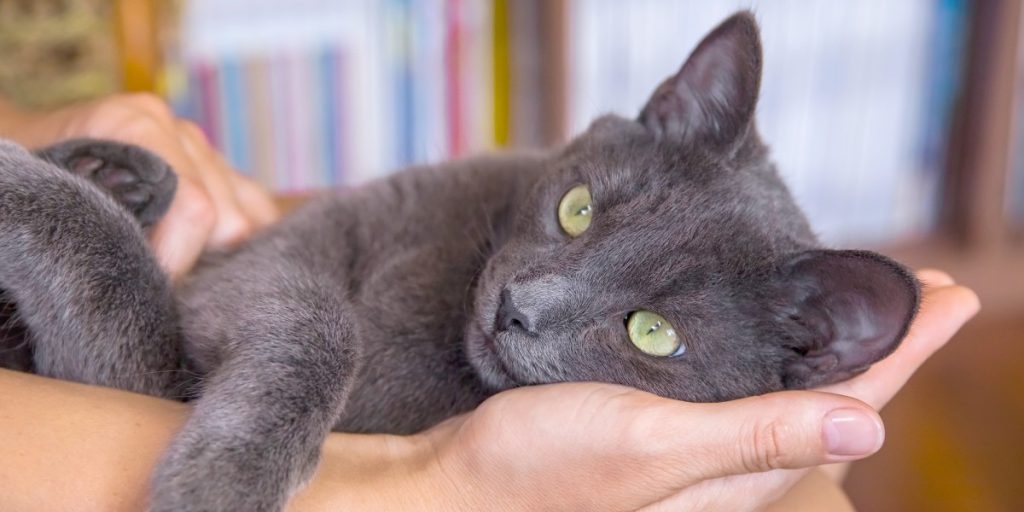Russian Blue kittens are a captivating breed known for their striking appearance and gentle temperament. If you’re considering bringing one into your home, this comprehensive guide will cover everything you need to know, from their characteristics to care requirements.
1. Breed Overview
Appearance
- Coat: Russian Blue kittens have a dense, plush coat that is a stunning silvery-blue color. Their fur is soft and luxurious.
- Eyes: Their vivid green eyes are one of their most striking features, becoming more vibrant as they mature.
- Body: They possess a medium-sized, muscular build with a graceful, elegant posture.
Temperament
- Affectionate: Known for their loving nature, Russian Blues often form strong bonds with their families.
- Intelligent: These kittens are clever and curious, enjoying interactive play and mental challenges.
- Playful: They have an active spirit and enjoy engaging in games, making them fun companions.
2. Benefits of Owning a Russian Blue Kitten
- Hypoallergenic Qualities: Russian Blues produce lower levels of the Fel d 1 protein, making them a suitable option for allergy sufferers.
- Loyal Companions: Their affectionate nature means they’re often very attached to their owners, providing companionship and comfort.
- Low Grooming Needs: Their short coat requires minimal grooming, making them relatively easy to care for.
3. Caring for Your Russian Blue Kitten
Nutrition
- Balanced Diet: Provide high-quality kitten food that meets their nutritional needs. Consult your veterinarian for specific recommendations.
- Portion Control: Follow feeding guidelines to avoid overfeeding and ensure healthy growth.
Grooming
- Regular Brushing: While their short coat requires minimal grooming, brushing once a week helps reduce shedding and keeps their fur healthy.
- Nail Trimming: Regularly trim their nails to prevent overgrowth and discomfort.
Health Care
- Veterinary Visits: Schedule regular check-ups, vaccinations, and deworming to maintain your kitten’s health.
- Monitor Health: Keep an eye out for any signs of illness and consult a vet if you notice anything unusual.
Socialization
- Early Exposure: Introduce your kitten to various environments, people, and pets to help them develop confidence and adaptability.
- Playtime: Engage in interactive play to strengthen your bond and provide mental stimulation.
4. Training Your Russian Blue Kitten
Litter Training
- Easy to Train: Most Russian Blue kittens are quick to litter train. Provide a clean litter box and show them where it is.
- Positive Reinforcement: Use praise and treats to encourage good behavior.
Basic Commands
- Training Sessions: Use positive reinforcement techniques to teach basic commands and tricks. Russian Blues are intelligent and enjoy learning.
5. Finding a Reputable Breeder
When looking to adopt a Russian Blue kitten, it’s essential to find a reputable breeder. Here are some tips:
- Research: Look for breeders with good reputations and positive reviews.
- Health Testing: Ensure the breeder conducts health screenings for common genetic issues.
- Visit the Facility: If possible, visit the breeder’s facility to assess the living conditions and the health of the cats.
6. Potential Health Issues
While Russian Blue cats are generally healthy, they can be prone to certain genetic conditions, such as:
- Hypertrophic Cardiomyopathy (HCM): A heart condition that can affect many cat breeds.
- Dental Issues: Regular dental care is important to prevent dental disease.
7. Conclusion
Russian Blue kittens make wonderful companions, known for their beauty, intelligence, and affectionate nature. By understanding their needs and providing proper care, you can ensure a happy and healthy life for your new feline friend. If you’re ready to welcome a Russian Blue into your home, enjoy the journey ahead!

